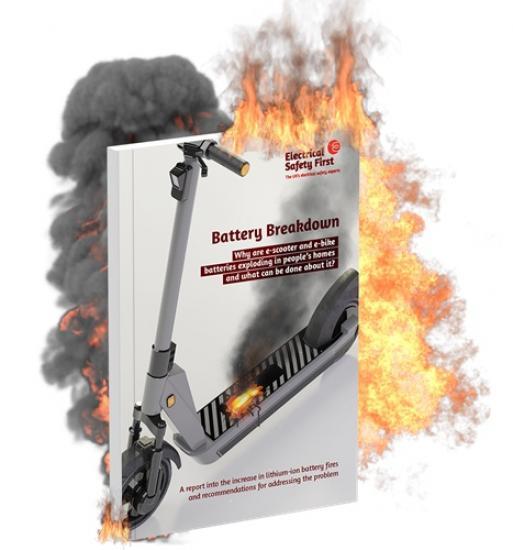Battery Breakdown - Safer Use How Owners Of E-bikes And E-scooters Can Use Them More Safely
23rd May 2024

One of the primary risks related to lithium-ion batteries is thermal runaway. Thermal runaway is a major challenge in the lithium-ion battery field due to its uncontrollable and irreversible nature, which can lead to venting of toxic fumes, fires and explosions.
If you already have an e-bike or e-scooter, here are some safety tips that can help you keep you and your loved ones safe.
Tips for using e-bikes and e-scooters safely
Buy your e-bike or e-scooter from a reputable retailer that you know and trust.
If you need a replacement charger or battery, get it from the original manufacturer - fake or substandard chargers can cause fires.
Avoid buying from market stalls, or from third-party sellers on online marketplaces. There is no guarantee the product has been through product safety testing.
To charge your e-bike or e-scooter safely, follow the manufacturer's charging instructions.
Once charged, unplug the charger - so you don't leave the battery on a continuous charge.
Avoid charging overnight. Fires occurring at night, when people are sleeping, are particularly dangerous as your reaction time is massively reduced.
Don't charge your e-bike or e-scooter in an exit route like a hallway, landing or stairwell. If a fire breaks out it can block your ability to escape.
Don't try to modify your battery pack as these modifications can cause fires.
Charge batteries in a safe place from a socket that is RCD protected and in an area with working smoke alarms.
Charge preferably, outside in an enclosed space like a detached garage, shed or a designated charging area for high rise flats.
Avoid charging batteries in strong sunlight or anywhere there is a high temperature or flammable materials.
If you want to convert your bike, go to a reputable retailer and have it fitted by a professional.
If your battery catches fire, do not attempt to put it out yourself. Get out and call the fire service.
Find out more about the dangers of lithium-ion batteries in our new report Battery Breakdown
Electrical Safety First
